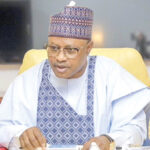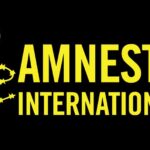From our discuss last week, it was clear that having the Federal Capital Territory (FCT) in a land considered as a no man’s land, actually predates the decision to relocate the FCT to Abuja. Interest generated and comments received necessitated further incision and illumination of the subject.
For the purpose of national unity, where all citizens have equal opportunities, there is nothing wrong with having the no-man’s land as Capital City. This proposal was embedded in the Aguda report, which recommended the transfer of the FCT to Abuja. Some highlights of the Aguda report were: A new capital is desirable that would be secured, ethnically neutral, centrally accessible, comfortable and healthful, and possesses adequate natural resources to provide a promising base for urban development. Also, a new capital is needed as a symbol of Nigeria’s aspiration for unity and greatness.
As presented in chapter nine of the report, when the Aguda Panel received memoranda, a very clear majority opted for relocation on virgin land. On the other hand, in the sixth chapter, the Panel considered that no ethnic group or people should be rendered “stateless” as a result of losing their land to the Capital Territory.
The art of national building is a matter of give and take. Also we can’t rule out having other sections being at the receiving end. The levels of benefits and sacrifice vary from one section to another. However, none others’ sacrifice is comparable to that of the original inhabitants of the land. According to other recommendations in the Aguda Panel report, and the Government policy in the enacted Decree no.6 of 1976, the original inhabitants in the entire 8,000 square km area, covering the new FCT are to be evacuated from the site to their parent States. Obviously, this was meant to actualize the acquisition of virgin land, at the same time avoid rendering any community “stateless”.
The evacuation exercise was thought to be easy because the initial assessment of the total number of the original inhabitants was put at between 25,000 and 50,000. “The Ibadan University was then commissioned to enumerate the population as well as assess their compensation entitlements. After the compensation figures were compiled and made known, because of the huge amount involved, the then Federal Military Government changed its mind over the evacuation. It was then decided that the evacuation be done in phases. Only those whose places of abode were either affected or likely to be affected by the actual citing of the City should be evacuated, with those in the lands covered by phase I development having to be treated as a priority area” (Ago 1984).
Faced with the difficult task of resettling the original inhabitants of the FCT, also, mainly as a result of the heavy financial implications, in comparison to the fund needed for the actual city development, the Shehu Shagari regime in 1980 set up a Presidential Committee on the Resettlement of the Inhabitants of the Federal Capital Territory under the Distinguished Senator A D Rufa’i. They conducted an opinion survey to ascertain those who wanted to be evacuated and those who wanted to remain in the FCT.
“After the analysis of both the Ibadan University survey and that of the Presidential Committee, it became clear that there were in fact over 100,000 inhabitants in the FCT, the figure now varies between 125,000 – 150,000. The major effects of these findings and the changes in resettlement policy by the Government then necessitated the creation of an administrative machinery to administer the local inhabitants as well as the ever increasing number of immigrants into the FCT” (Ago 1980).
A particular episode worthy of note today which perhaps would have arrested so many complains of marginalization of the FCT local indigenes was mentioned, when the 1980 Presidential Committee visited and conferred with the officials of the Niger State Government. It stated “We wish to seize this opportunity to bring to your notice, Mr. President, that when we paid a courtesy call on the Deputy and Acting Governor of Niger State and later held a meeting with a delegation from Niger State House of Assembly, in each case it was requested that the size of the Territory be reduced in order to minimize the magnitude of the problem of resettlement. It is their view that since the location of the City is now established, the size of the Territory can safely be reduced with less inconvenience to the inhabitants of the Capital Territory. This matter, obviously, does not form part of the Terms of Reference of our Committee. We, therefore, have not dealt with it in the main body of the Report”.
The implication of the change in resettlement policy was that, despite the fact that building a brand new Capital for the Nation was actualized, the notion of having a virgin, or no-man’s land and avoiding “statelessness” of certain communities remain questionable till date. Thus, what was portrayed was a scenario akin to achieving our goal, but, with certain objectives breached. We believe that this challenge is not insurmountable, so long as we can think out of the box.

 Join Daily Trust WhatsApp Community For Quick Access To News and Happenings Around You.
Join Daily Trust WhatsApp Community For Quick Access To News and Happenings Around You.


